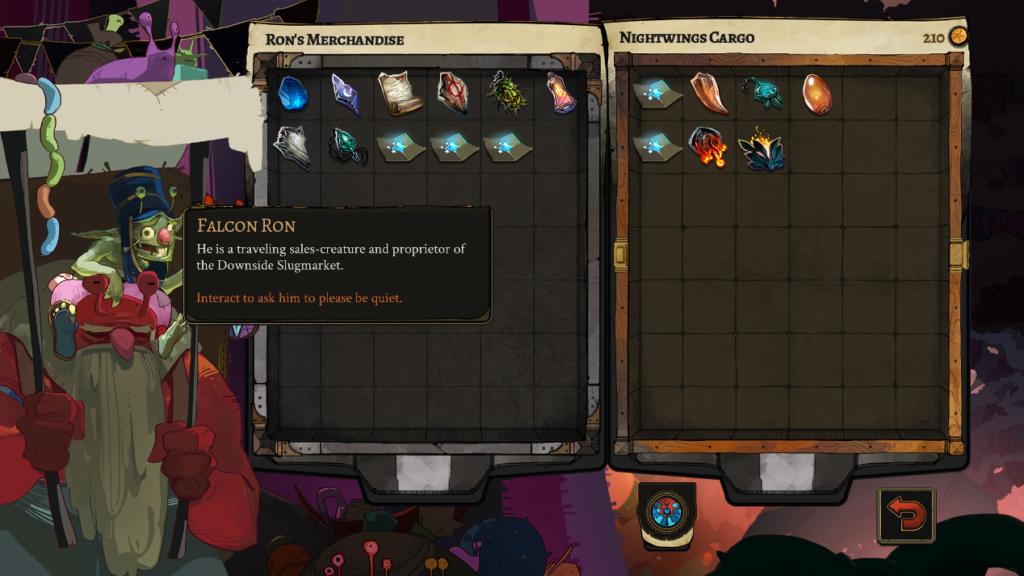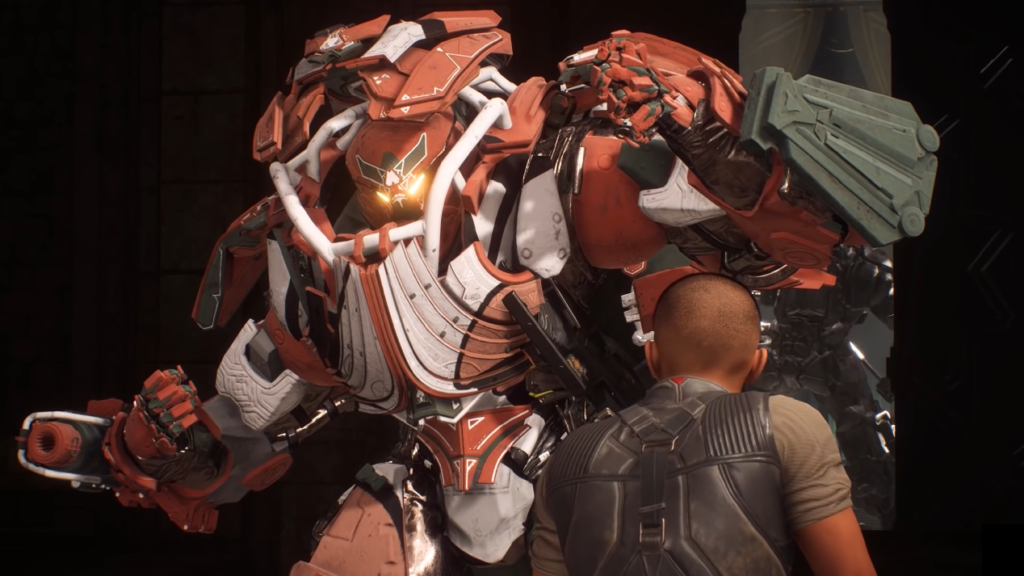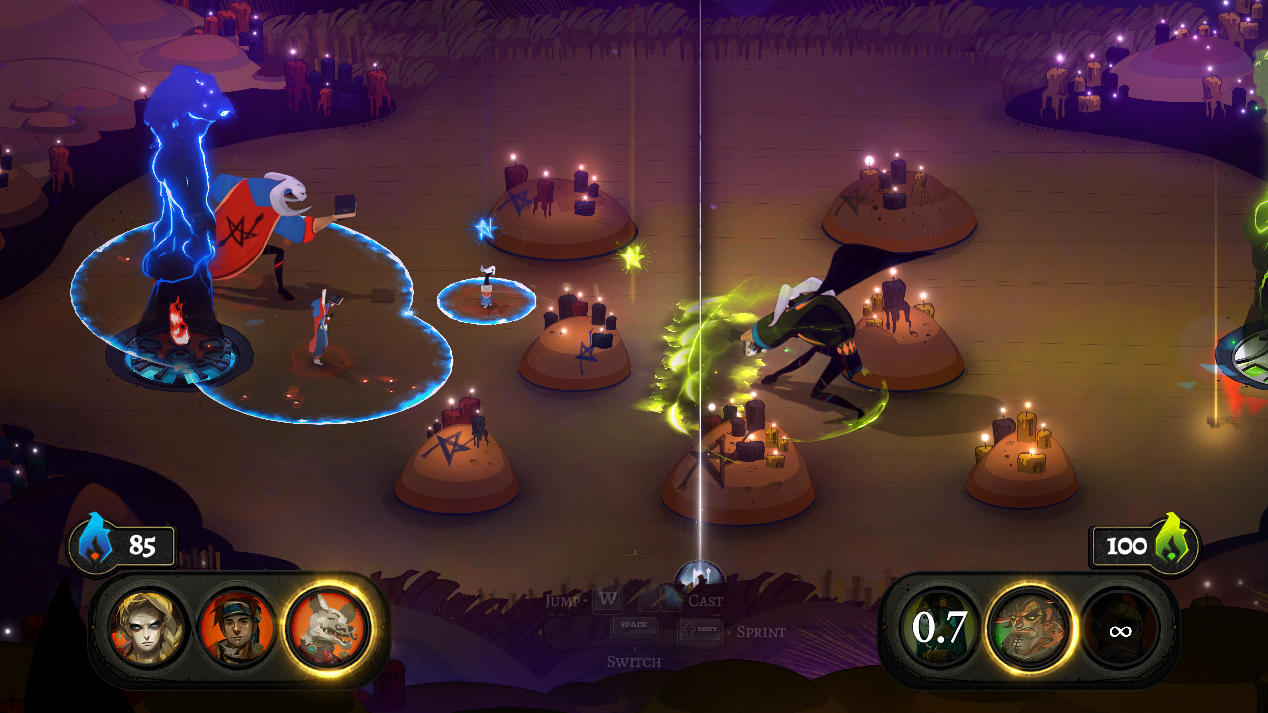During class on Tuesday, we identified Pyre as a type of “Platypus” game, or a type of game that synergizes multiple genres into one. Pyre is a great demonstration of how it’s possible to combine seemingly disparate game genres into an enthralling experience. Serving primarily as a narrative game in which the main character, the reader, both forms connections with exiles and attempts to help them in their redemption, Pyre somehow is able to incorporate a sports game into its gameplay and make it a central part of its narrative. Along with these two aspects, it is also able to sprinkle trading and general adventure into its arsenal, with its optional passages with Falcon Ron and traveling around the Downside.

Part of what makes Pyre a great game is this “Platypus” quality. Hypothetically, let’s consider how the appeal of Pyre restricted to a single genre. As a narrative game, Pyre is strong: the characters are compelling, and the interactions the reader has with them are what made me want to keep playing. However, without the sports and adventure aspect, a lot of uncertainty and tension surrounding Rites would be lost, and we would be less able to connect with the characters given we know little to nothing about how they’ve traveled through the world they’re situated in. And if Pyre were just a sports game, it would still be somewhat fun, but Rites would lack the investment and stakes provided by the narrative, and would be more boring and predictable without an arsenal of interchangeable power ups provided by the trading aspect of the game. The combination of these seemingly unconnected genres is what makes Pyre such a complete experience.
Pyre is just one recent example of a “platypus” game which has been appraised for its ingenuity and willingness to push the envelope in experimenting with different genres. For instance, Super Mario 64 (1996) was revered for taking the Super Mario franchise, traditionally a 2D-platformer into new territory with its 3D Graphics while keeping most of the charm and feel of the game in the franchise. Another good example is Portal (2007), a unique combination of the puzzle and platforming genres that engage its players through both its entertaining puzzles and narrative/mystery element within the game. There are also a host of games that have found commercial success by transitioning from largely single-player to add online multiplayer features to their games, from sports games like FIFA and Madden, to console first person shooter games like Halo. But most importantly, the games that were critically well-received were complete games, in that it was both these “platypus”-like qualities and keeping the feeling of these different genres that made these games great.
So while these games appear to be everything game designers should strive towards, it can often be this ambition which can handicap a game from either coming into its own or reaching its true potential. For example, the game Fallout 76 (2018) attempted to be a type of Platypus game which pushed a traditionally single player narrative adventure series into an online multiplayer genre. While Fallout 76 can be technically considered a “platypus” game, it failed to maintain being a complete experience for either of the genres it attempted to emulate, with the online experience being buggy and unreliable upon release and the narrative experience needing to be bogged down in order to accommodate playing with others. Anthem (2019) fell into similar pitfalls upon its release, being stuck between a narrative driven, first person shooter and multiplayer looter type game to play with friends. The main difference, however, I have theorized to be between games like Super Mario 64/Pyre and Fallout 76/Anthem is that the former set of games prioritized implementing their ideas and gameplay, while the latter games looked to make their games “platypus”-like before considering how this would impact the feel and gameplay.

While “Platypus” games are often hailed for their ingenuity and can drive what we consider video games to be into new territories, they can be dangerous to emulate without a clear, concrete vision. “Platypus” games like Pyre expertly interweave different genres to add on to the overall vision the developers wanted their players to have, with each element adding something unique to a player’s experience. In contrast, throwing different elements of genres together without any rhyme or reason can actually take away from a game’s overall experience, making it unfocused and dull.

